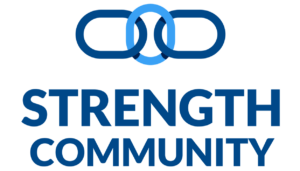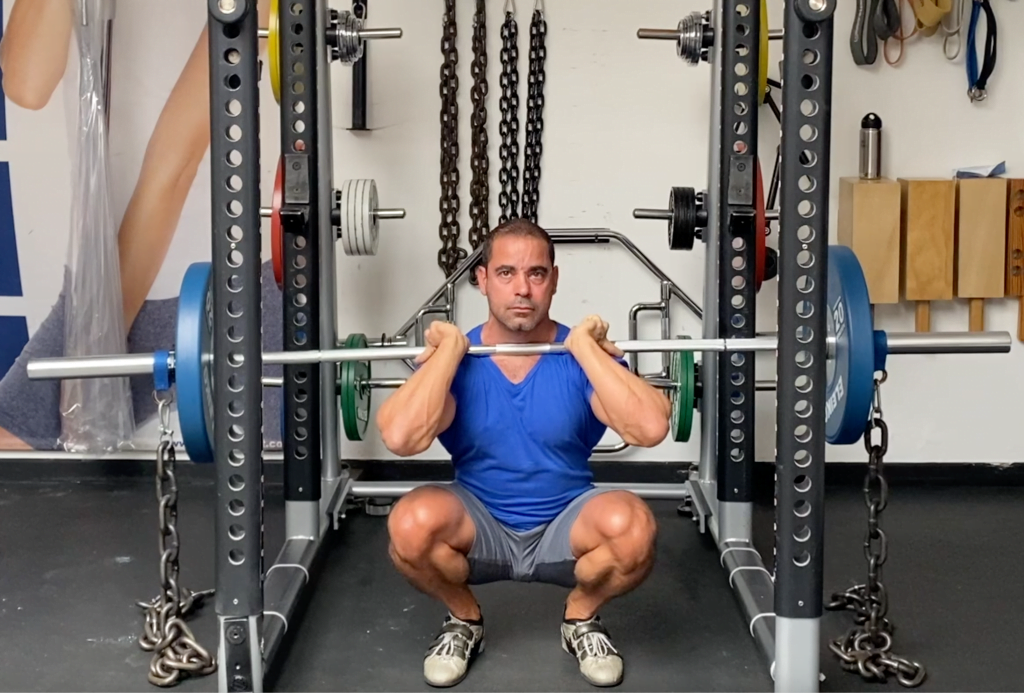The concept of varying the resistance during repetition is not new and you can even evidence it in old pictures of the iron game, where you can see chains as a means of resistance. Nowadays new tools have been developed, but the concept is still the same.
The Concept of Variable Resistance Training
The whole idea of varying the resistance during a repetition comes from the recognition that muscle groups are stronger, or can produce more tension in certain parts of a particular movement, and weaker (or can produce less tension) in other parts of the same movement, so changing the resistance accordingly makes a lot of sense. And this brings me to the concept of the strength curve.
Strength Curve
Even though writing a full dissertation about the different strength curves is beyond the scope of this article, it is important to address the concept and the basic definitions.
There are 3 different strength curves identified:
1. Ascending Strength Curve:
It refers to the movements where the muscle groups involved are progressively stronger (or can produce more tension) during the execution of the concentric phase of the exercise. In more simple terms, the closer you are getting to the end of the concentric range, the easier it is.
A good example of this type of strength curve is the different extending movements, like the squat and bench press (knee extension and elbow extension, respectively).
2. Descending Strength Curve:
It refers to the movements where the muscle groups involved are progressively weaker (or can produce less tension) during the execution of the concentric phase of the exercise. In more simple terms, the closer you are getting to the end of the concentric range, the harder it is.
An example of this type of strength curve is certain flexion movements, like leg curls and pull-ups (knee flexion and shoulder abduction, respectively).
3. Descending-Ascending Strength Curve:
It refers to the movements where the muscle groups involved are progressively weaker until about mid-way of the movement, and then progressively stronger towards the end of the execution on the concentric phase of the exercise (or can produce less tension in the mid part of the movement). In more simple terms, the middle of the movement is the hardest part of it.
A good example of this type of strength curve is biceps curls, which is an elbow flexion exercise.
Tools for Variable Resistance Training
There are 2 main tools or attachments that can be used to modify the resistance during a repetition:
Chains:
They are mainly attached to bars. The closer they are to the ground (or contact surface of the chain), the lighter they feel on the bar. The farther they are from the contact surface, the heavier they feel, as more links are freely hanging.
The proper way to set chains is to make sure that they always make contact with the ground because once they are fully off the contact surface, the weight will not be variable anymore.
Bands:
Bands should be attached to the bar and another fixed object in order to create the tension they provide. The more the band is elongated, the more tension it will exert on the bar (and obviously on the fixed item).
The proper way to set the bands is to make sure that they have some tension during the whole movement. If a band is simply loose at any point of the movement, once the band gets the tension, you’ll feel like hitting a wall.
Applications
The main purpose of using variable resistance training is to accommodate the weight to the natural strength curve of the movement, making it harder at its strongest part, and easier at its weakest portion.
It stands to reason that if both tools, chains, and bands, produce an increase in the weight lifted the farther the bar is from the ground, they are perfectly suited for exercises with an ascending strength curve, which is mainly related to extensor muscle groups.
Strength Gains:
Both tools are great for strength gains, but chains are especially well suited for this purpose because the resistance increase is more gradual and uniform. If you would like to picture it, depending on the weight of every link of the chain, you could imagine that someone is adding a little bit of weight every 2-5 centimeters as you progress on the concentric portion of the exercise.
Acceleration:
Bands are great to teach acceleration because the rate of increased resistance is more rapid and tends to slowly decrease at the end of the length capacity of the band.
You could imagine someone pulling the bar in the opposite direction of the movement you are doing, and the more you progress on the concentric range, the more that person is pulling.
Modification of time under tension:
Chains and bands can be used to increase the time under tension, because, for obvious reasons, the concentric phase will progressively be heavier, which depending on the weight, won’t allow you to go as fast as without them.
Percentage of total weight:
If you review the literature, you can see applications that go from 5% to 85% of the total load lifted, but it is my experience, along with the experience of other highly accomplished strength coaches, that the additional resistance produced by the chains and bands should be in the range of 20% – 40% of the total weight lifted, depending on the goal and the individual. As you might already know now, different people respond differently to the same stimulus.
Word of caution:
All the applications mentioned above are fantastic and have their time and place in the training process of an athlete/client, but there is a consideration that you must keep in mind, and it is that the use of chains and bands is more taxing for the central nervous system than the use of regular weights.
In this sense, it is always recommended to do one session with the selected tool, and the next session for the same muscle group without the tool, in order to allow the proper recovery of the central nervous system.
I have had cases where the recovery capacity of the central nervous system is so impressive, that they can use chains or bands every training session during a whole program, without any detrimental effect on the central nervous system.
But keep in mind that these are rare exceptions.
Where it shouldn’t be applied
First, these tools should NEVER be used on Olympic lifts or their power variations.
Second, as you might understand now, the use of chains and bands MUST be restricted to extensor chain movements, and NEVER be used on descending or descending-ascending strength curves.
When you use them on these two training curves, you negatively modify them, damaging their appropriate strength expression.
That’s why when you see a trainer prescribing or a person using bands to do pull-ups, chains or bands for biceps curls, etc., you immediately know that the trainer or person in question doesn’t understand the concepts of strength curve or variable resistance.
And I have to say that sadly, I’ve seen this happening in gyms that brag about being the best in the world because they have the best-prepared trainers and training systems in the market…
When somebody invents a device that can be used on free weights that is capable of decreasing the weight lifted, or that can decrease it and then increase it during the execution of the concentric range of a lift, I’ll be very happy to give it a try, but to my knowledge, that device hasn’t been invented yet.
A short note on machines
Certain machines can modify the strength curve by the use of cams, different loading pins, or moving the subject working in them.
The best example of the proper use of cams is the Atlantis Prone Leg Curl because the cam used perfectly adapts the weight lifted to the human strength curve, and that’s why it’s the only one I recommend.
About the loading pins, there are 2 options:
Machines that have only one loading pin and it doesn’t move in a linear fashion, but they do not necessarily match the strength curve they are designed for.
Machines that have two or three loading pins where you can choose which parts of the strength curve you want to load more and which parts you want to load less.
Finally, the Roc-it line of Hoist has some pieces that get close to different strength curves.
Apply the concept of resistance training wisely, and bring more and better results to your clients.

